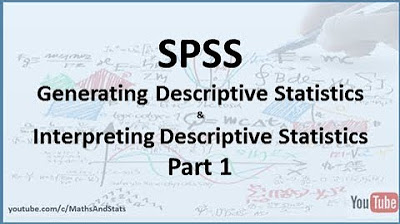Hennepin Technical College Intercultural Conflict Styles
Summary
TLDRIn this insightful presentation, Jonathan Stewart from Hennepin Technical College introduces Dr. Mitch Hammer's intercultural conflict style model. Stewart explains four distinct styles of conflict resolution based on directness and emotional expression: Discussion, Engagement, Accommodation, and Dynamic. He emphasizes understanding these styles to navigate cultural differences in conflict effectively, highlighting the strengths and weaknesses of each approach and encouraging the adoption of alternative methods to suit different situations.
Takeaways
- 📚 The speaker, Jonathan Stewart, is an instructor at Hennepin Technical College focusing on language, culture, conflict, and cultural topics.
- 🌐 He introduces a model of intercultural conflict resolution based on Dr. Mitch Hammer's work, which is used for customized training services.
- 🔍 The model helps individuals understand their own and others' conflict resolution styles without taking things personally.
- 📊 The model is structured around four quadrants, differentiated by directness and emotional expression during conflict.
- 🗣️ 'Discussion style' individuals are direct and logical but keep emotions in check, focusing on problem-solving rather than personal issues.
- 🔥 'Engagement style' people are direct and express emotions as part of the conflict resolution process, valuing emotional honesty.
- 🤝 'Accommodation style' individuals are indirect and keep emotions to themselves, aiming for harmony and avoiding direct confrontation.
- 🎭 'Dynamic style' individuals are indirect and express emotions through stories or examples, often preferring third-party mediation.
- 🌟 Each style has strengths and weaknesses, and understanding them can help in adapting one's approach to conflict resolution.
- 🌍 Stewart encourages considering culture in the broadest sense, including worldviews, personalities, and personal backgrounds.
- 💡 The model serves as a tool for self-reflection and understanding others in conflict situations, promoting effective intercultural communication.
Q & A
Who is Jonathan Stewart and what does he do?
-Jonathan Stewart is an instructor at Hennepin Technical College, focusing on language and culture, conflict, and cultural topics for customized training services.
What is the purpose of the model that Jonathan Stewart wants to share?
-The purpose of the model is to provide a framework for understanding and resolving intercultural conflicts by analyzing personal conflict styles and applying them to specific situations.
Who is Dr. Mitch Hammer and what is his contribution to the model?
-Dr. Mitch Hammer is a professional who works in hostage negotiation and large-scale mediation around the world. He developed the intercultural conflict style model that Jonathan Stewart wants to share.
What are the two main axes that define the intercultural conflict style model?
-The two main axes are how individuals express disagreement (direct or indirect) and how they express their emotions (retained or expressed).
What are the four intercultural conflict styles identified in the model?
-The four styles are the Discussion style, the Engagement style, the Accommodation style, and the Dynamic style, each characterized by different ways of expressing disagreement and emotions.
What is the Discussion style and how do individuals with this style approach conflict?
-The Discussion style involves being direct in addressing the problem while keeping emotions in check. Individuals with this style believe resolution comes from the clash of emerging ideas.
How does the Engagement style differ from the Discussion style?
-The Engagement style is also direct in addressing the problem, but unlike the Discussion style, individuals express their emotions openly as part of the conflict resolution process.
What is the Accommodation style and how is it typically misunderstood?
-The Accommodation style is indirect in communication and retains emotions. It is often misunderstood as passivity, but it actually seeks harmony and avoids attaching the problem to the person.
What is the Dynamic style and how do individuals with this style resolve conflicts?
-The Dynamic style is characterized by being indirect in communication and expressive with emotions. Resolution often comes in the form of a story or example, and individuals may prefer third-party mediation or alternative resolution methods.
How can understanding these conflict styles help in dealing with different people in conflict situations?
-Understanding these styles allows individuals to recognize their own and others' conflict resolution methods, enabling them to adapt their approach, appreciate different perspectives, and find more effective ways to manage conflicts.
What does Jonathan Stewart suggest when thinking about conflict and culture?
-Jonathan Stewart suggests thinking of culture in the broadest sense, including worldviews, personalities, and other factors, as everyone is a cultural composite, and this model can help navigate conflict situations.
Outlines

Esta sección está disponible solo para usuarios con suscripción. Por favor, mejora tu plan para acceder a esta parte.
Mejorar ahoraMindmap

Esta sección está disponible solo para usuarios con suscripción. Por favor, mejora tu plan para acceder a esta parte.
Mejorar ahoraKeywords

Esta sección está disponible solo para usuarios con suscripción. Por favor, mejora tu plan para acceder a esta parte.
Mejorar ahoraHighlights

Esta sección está disponible solo para usuarios con suscripción. Por favor, mejora tu plan para acceder a esta parte.
Mejorar ahoraTranscripts

Esta sección está disponible solo para usuarios con suscripción. Por favor, mejora tu plan para acceder a esta parte.
Mejorar ahoraVer Más Videos Relacionados

Undergraduate Students Unwittingly Subjected to World's Worst Research Presentation

Prompt engineering is dead but there is a better life after death.

Greek Theatre Masks and the Contemporary Creative Process

How to Practice Guitar - 7 Tips That Actually Work - Guitar Lessons with Stuart!

SPSS: Generating and Interpreting Descriptive Statistics - Part 1

I Abruptly Stopped Drinking Caffeine And This Happened
5.0 / 5 (0 votes)
